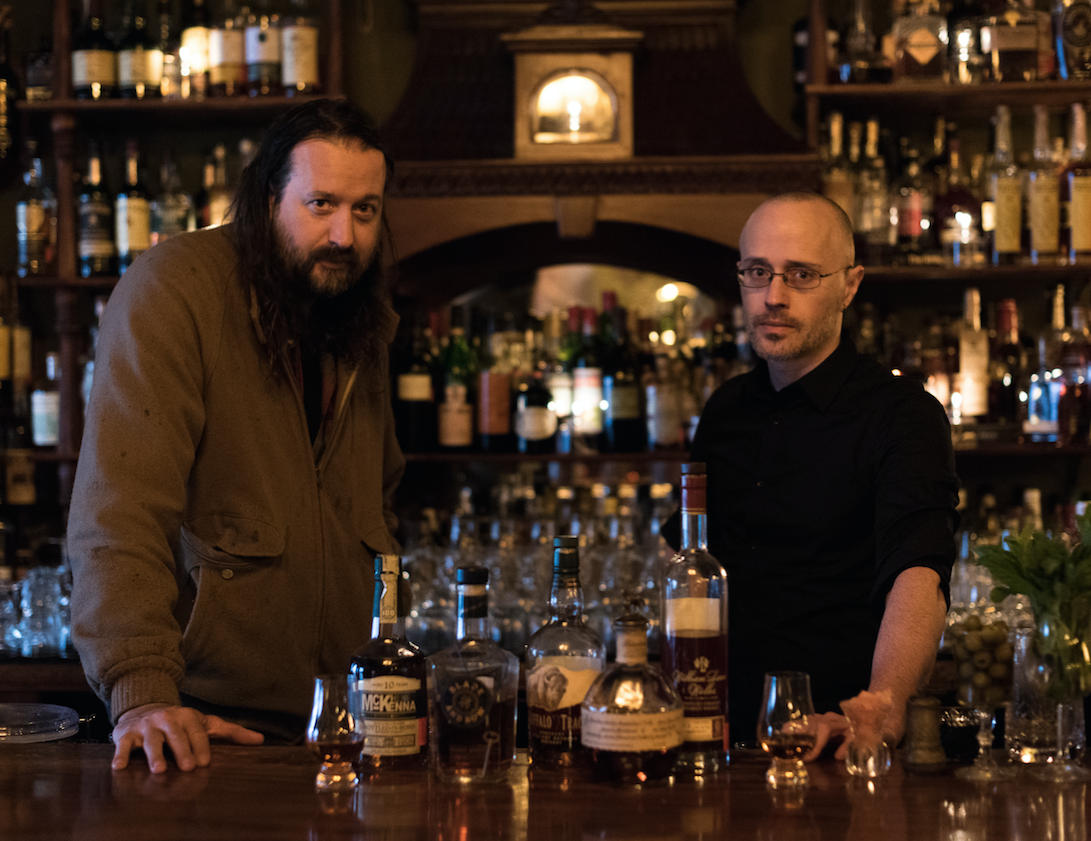The origin of most spirits can be traced to a specific region or country: Gin is most often associated with England; scotch, of course, is a product of Scotland. Rum is a Caribbean spirit, while tequila comes from Mexico. Rye whiskey is often thought of as an American spirit, but it has origins in and around Germany.
So it’s bourbon whiskey that best deserves the appellation of “the quintessential American spirit,” says Casey Campfield of downtown bar The Crow & Quill. “There’s a poetic allure to the history of bourbon that really appeals to me.”
Compared with other spirits, bourbon has a relatively short history. The alcoholic beverage we call bourbon appeared only after European settlers made their way to North America. Despite its comparative newness, beverage historians can’t even agree on where the name bourbon came from.
Many assume that the spirit originated in Bourbon County, Ky. But, as liquor historian Michael Veach explained when interviewed for a 2013 Smithsonian Magazine interview, there’s strong evidence that the term was first used in New Orleans. Nineteenth-century bar patrons were known to request “that whiskey they sell on Bourbon Street,” a Kentucky-made corn-based product aged in barrels so that it would taste a bit like cognac.
Experts do agree on what makes a bourbon. In fact, in some cases, it’s mandated by law. Bourbon must be distilled from a mash bill (grains and water) containing at least 51 percent corn. That corn gives bourbon one of its distinctive characteristics: sweetness. The remainder of the mash can include rye, malted barley, wheat and/or other grains. “A high rye mash bill will give you a really nice, spicy kick,” Campfield says. “Wheat creates a gentler, softer, slightly sweeter bourbon.”
Bonded bourbon is produced under exacting standards, explains Chris Bower, co-owner of West Asheville “dive bar” The Double Crown, downtown’s Lazy Diamond and Eda Rhyne Distillery. “Bonded bourbon is 100 proof [50 percent alcohol] and aged in a warehouse under government supervision. The reason I love bonded stuff is because there’s transparency,” he says. “You know exactly what you’re going to get, right down to the warehouse it was aged in.”
Bourbon must be matured at least two years in new American oak casks that have been charred. “New oak gives a lot of vanillin and other compounds,” Campfield explains. “It imparts a lot of sugar to the spirit as well.”
“The barrel process is where a lot of the magical things happen,” adds Bower. He says that many factors affect bourbon’s finished character, including where within the rick house (aging storage facility) the barrel is located, weather and blending. The addition of leftover mash from a previous batch — a process called “sour mash” — helps ensure consistency.
But consistency isn’t always all it’s cracked up to be, says Bower. “I look for inconsistency,” he says. “That way I know the product is actually made by human beings. If I can taste a little bit of variation, that makes it more real to me.”
The Crow & Quill and Double Crown each offer more than 125 brands of bourbon. And Campfield and Bower agree that sweetness is just part of what gives bourbon its character. “You really want to be looking for sweetness and spice and the way those two things balance each other,” says Campfield.
Both recommend Henry McKenna Single Barrel, a bonded bourbon aged for a decade, as a good balance of price and quality. “If you want to sip on a sophisticated bourbon, this would be it,” Bower says. Campfield emphasizes that McKenna is “a great mixing bourbon” as well. And Bower says that despite its unfortunate reputation as the choice of rabble-rousing college students, Fighting Cock is a good choice, too. Campfield has good things to say about Buffalo Trace bourbon but notes that the brand has become more difficult to find locally.
Both men express a preference for the bonded varieties of bourbon. “I really like a slightly higher-proof bourbon for mixing,” Campfield says. “It punches through the other ingredients that are lying on top of it.”
“I’m just a debutante when it comes to all this stuff,” says Bower with a chuckle. “I’m not that intellectual about it; I just love the spirit.” Campfield’s perspective is not dissimilar. “Keep in mind that this is a completely subjective field,” he advises. “Your tastes are just as valid as anyone else’s.”
The Crow & Quill and Double Crown both make a point of offering bourbons that are inexpensive and approachable, right alongside superpremium brands. “Just because you don’t have $250 doesn’t mean you can’t enjoy a good bourbon,” Bower says. He believes drinkers can enjoy a wide variety of bourbon experiences at any price, so there’s no reason not to explore. “Some people say, ‘I only drink Jack Daniel’s,’” he says. “I don’t quite understand that; it’s like saying, ‘I’m only going to eat pizza.’”




Always appreciate opinions and insights into good bourbons. thank you
Have really enjoyed sampling various bourbons st the Double Crown over the years, from the $5 pours on up to the premium pours. They have always been nice enough to let me bring in my Glencairn glass as well.